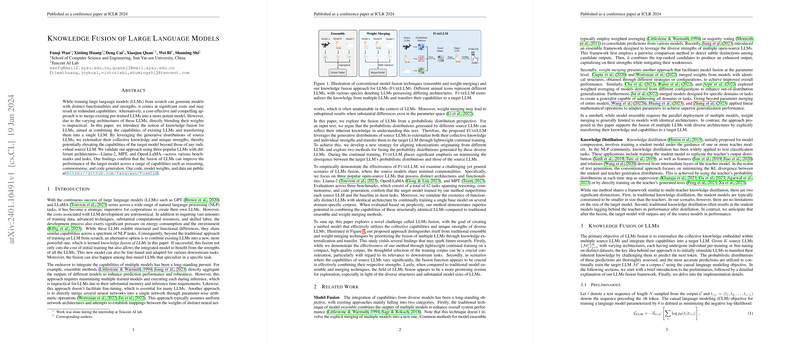Introduction
In the landscape of NLP, the development of LLMs represents a significant stride forward in the ability of machines to process and understand human language. The training of such models, albeit yielding powerful computational tools, demands substantial resources. The paper under discussion introduces an alternative to building these complex models from the ground up. The authors present an innovative technique known as knowledge fusion, which essentially merges the expertise of various pre-existing LLMs to produce an advanced and capable successor without the traditionally associated costs and environmental impact.
Methodology
The novel knowledge fusion strategy transcends traditional methods that typically require homogeneous model architectures or maintain multiple models in parallel. Instead, it harnesses the predictive power embedded in the generative distributions of various source LLMs. By focusing on the probabilistic outcomes these models generate, the authors can transfer the unique knowledge and strengths of each contributing LLM to a singular target LLM via a process of lightweight continual training. The amalgamation occurs not by blending raw model parameters but by aligning the token probabilities associated with specific text inputs.
Evaluation
The authors put their method to the test using three distinct LLMs: Llama-2, MPT, and OpenLLaMA. Across multiple tasks and benchmarks related to reasoning, commonsense understanding, and code generation, knowledge fusion displays a marked improvement in performance over individual source models and a basic ensemble baseline. Importantly, the improvements are not just quantitative; the fused model exhibits gains in a broad array of capabilities, hinting at a qualitative enhancement of the model's knowledge base.
Implications and Conclusions
Concluding their findings, the researchers underline the potency and promise of knowledge fusion in LLMs, noting it as a fertile area for future advancement. Their work demonstrates that the fused model surpasses the capability of its individual parts, suggesting that the collective wisdom of distinct models, when harnessed appropriately, can lead to a computational sum greater than its parts. The researchers provided a foundation for potentially cost-saving, environmentally friendlier, and sophisticated advancements in AI language processing, opening a door to a range of applications that can benefit from more intelligent and capable LLMs.
